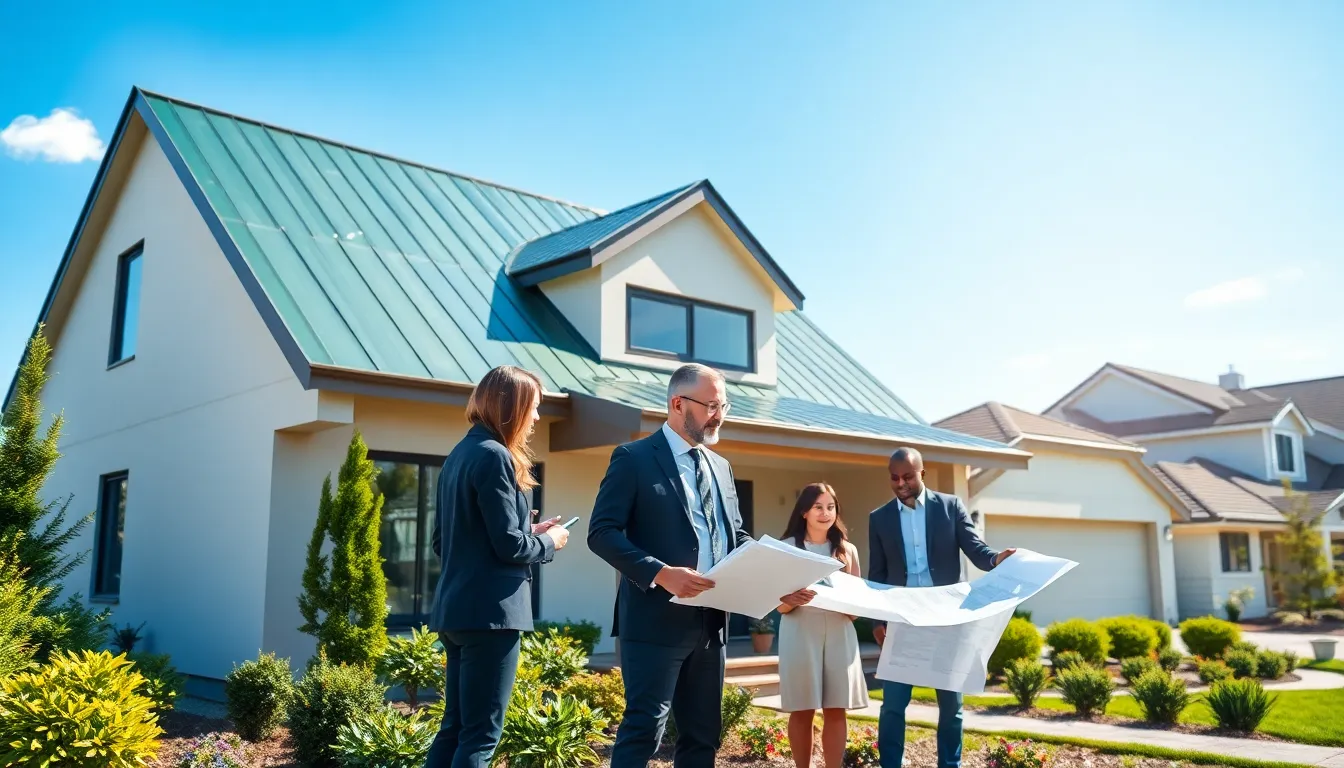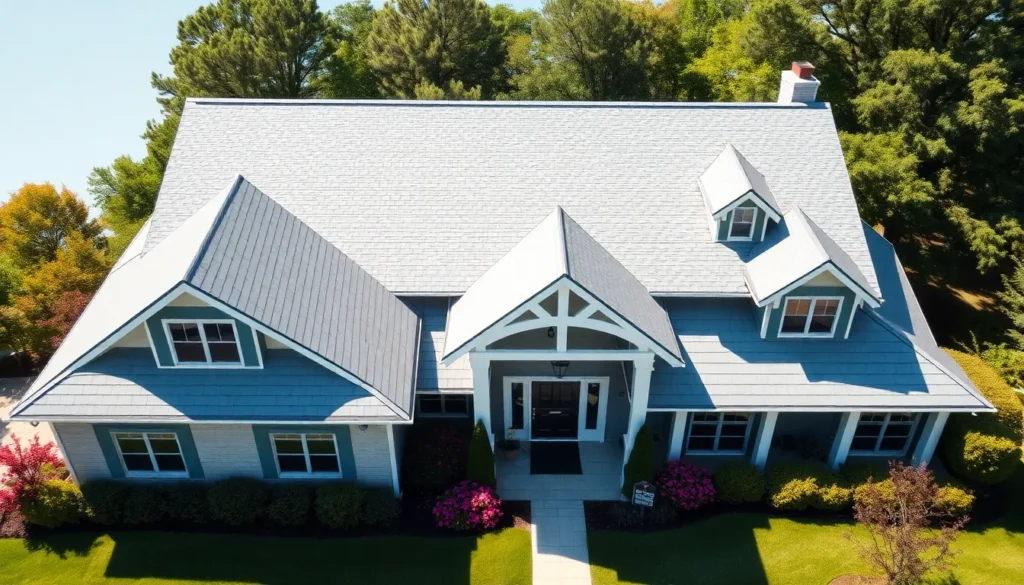In the world of roofing materials, vinyl roofing has carved out a niche that’s hard to ignore. Think about it: it’s durable, eco-friendly, and comes with an aesthetic charm that rivals traditional options. Imagine your home sporting a roof that not only looks stunning but also stands the test of time. If you’re in need of a roofing solution that checks all the boxes while keeping your wallet happy, you’ve just hit the jackpot. Prepare to jump into the ins and outs of vinyl roofing, your future roof will thank you.
Table of Contents
ToggleWhat Is Vinyl Roofing?

Vinyl roofing is a type of roofing system made from a synthetic polymer, polyvinyl chloride (PVC). This material is known for its resilience and ability to withstand harsh weather conditions, making it a preferred choice for many homeowners. Unlike traditional roofing materials, vinyl is lightweight, which simplifies the installation process. It comes in various styles and colors, allowing homeowners to choose an option that complements their property beautifully. Also known for its energy-efficient properties, vinyl roofing reflects sunlight, reducing energy costs during hot months. Essentially, vinyl roofing combines practicality and aesthetics in a way that few materials can match.
Benefits of Vinyl Roofing
There are numerous advantages to selecting vinyl roofing for a home. First, its durability is unmatched. This material is resistant to cracking, peeling, and fading, meaning it can stand strong against UV rays, moisture, and even hail. Also, it’s exceptionally low maintenance. Homeowners won’t need to worry about repainting or staining, unlike wood or metal alternatives. Another significant benefit is the energy efficiency that vinyl roofing provides. Because of its reflective properties, homes equipped with vinyl roofs often see a decrease in cooling costs during sunny seasons. And let’s not forget its eco-friendly aspect: most vinyl roofing products are recyclable, making it a responsible choice for environmentally conscious homeowners.
Types of Vinyl Roofing Systems
When it comes to vinyl roofing systems, there’s a plethora to choose from. The most common types include:
- Single-Ply Vinyl Roofing: This option consists of a single layer, typically used on commercial buildings, but it’s sneaking into residential areas too.
- Vinyl Shingles: These offer the look of traditional shingles but with the benefits of vinyl. They come in various colors and textures, providing versatility in design.
- Vinyl Membrane Roofing: Often used on flat roofs, this system provides waterproofing and protection against the elements.
Each type serves different needs, ensuring that homeowners find a system that fits their unique requirements.
Installation Process of Vinyl Roofing
The installation process for vinyl roofing is generally straightforward but does require precision. First, a thorough inspection of the existing roof structure is crucial. Any repairs needed must be completed before installation. Once the roof is ready, contractors will lay down an underlayment to create a barrier against moisture.
Next, the vinyl sheets or shingles are meticulously placed to ensure a proper seal. It’s vital that each piece overlaps correctly to prevent potential leaks. After placement, roofing professionals will secure the vinyl in place using adhesive or mechanical fasteners, depending on the type of vinyl system chosen. The final step involves inspecting the joints and seams for any potential weak points, ensuring your new roof stands strong against whatever Mother Nature throws its way.
Maintenance Tips for Vinyl Roofing
Even though vinyl roofing is low maintenance, a few simple upkeep tasks can extend its lifespan. Regular cleaning is essential to remove dirt and debris that can accumulate over time. Homeowners should inspect their roofs bi-annually for any signs of wear, particularly after harsh weather conditions. If any loose seams or minor damage are noticed, addressing these early on can prevent more significant issues down the line. Also, using a gentle detergent and soft brush for cleaning can help maintain that vibrant look without damaging the material.
Cost of Vinyl Roofing: What to Expect
When considering vinyl roofing costs, several factors come into play. On average, homeowners can expect to pay between $3 to $6 per square foot. But, this price can fluctuate based on the type of system selected, the complexity of the installation, and location. Also, it’s important to factor in the costs of professional installation, which can add another $1 to $3 per square foot. While vinyl roofing may have a higher upfront cost compared to some materials, its longevity, minimal maintenance requirements, and energy efficiency often yield a higher return on investment.








